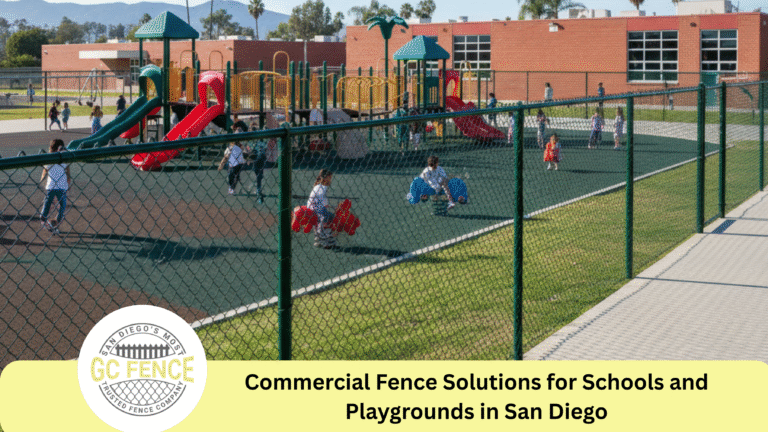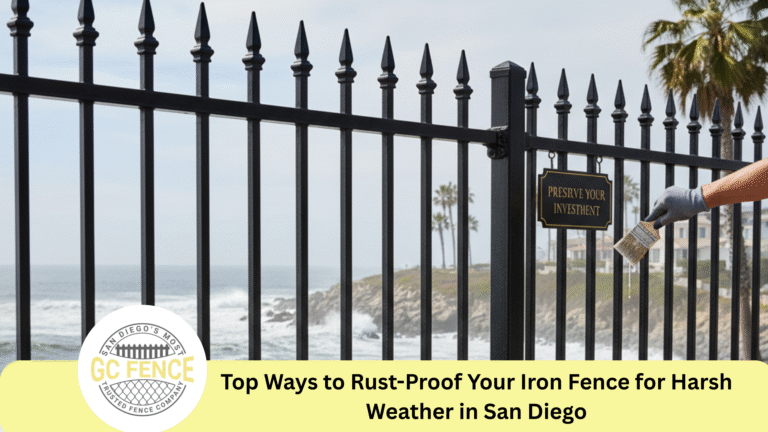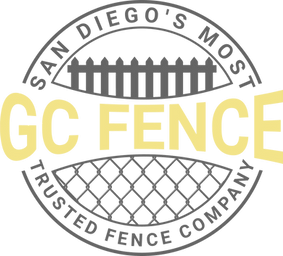Choosing the right fencing material for your property can be challenging with so many options available. Wood, vinyl, and aluminum fences are among the most popular choices, each offering unique advantages and drawbacks. Understanding the pros and cons of each material can help you make an informed decision that suits your needs, budget, and aesthetic preferences.
Wood Fences: Classic Appeal with Natural Beauty
Wood fences have been a traditional choice for homeowners for decades. They offer a warm, natural look that blends well with most landscapes.
Pros of Wood Fences:
- Aesthetic Versatility: Wood can be painted or stained in any color, allowing customization to match your home’s style.
- Privacy: Solid wood panels provide excellent privacy and sound insulation.
- Affordability: Wood fences generally have a lower upfront cost compared to vinyl or aluminum.
- Eco-Friendly: Wood is a renewable resource, and many suppliers offer sustainably sourced options.
Cons of Wood Fences:
- Maintenance: Wood fences require regular maintenance, such as sealing, painting, or staining to prevent rot, warping, and insect damage.
- Durability: Exposure to moisture and weather can cause wood to deteriorate over time, leading to repairs or replacement.
- Susceptibility to Pests: Termites and other wood-boring insects can damage wooden fences if untreated.
- Fading and Cracking: Wood can fade under sunlight and crack during harsh weather conditions.
Vinyl Fences: Low Maintenance and Long Lasting
Vinyl fences have gained popularity as a modern alternative to traditional wood. Made from PVC (polyvinyl chloride), vinyl fencing offers a clean, polished look.
Pros of Vinyl Fences:
- Low Maintenance: Vinyl requires minimal upkeep—no painting or staining is necessary, and it resists mold, rot, and insect damage.
- Durability: Vinyl fences are weather-resistant and can last for decades without fading, cracking, or warping.
- Variety of Styles: Available in multiple colors and styles, vinyl can mimic the look of wood or offer sleek contemporary designs.
- Easy to Clean: A simple wash with soap and water is enough to keep vinyl fences looking new.
Cons of Vinyl Fences:
- Higher Initial Cost: Vinyl fences tend to have a higher upfront cost compared to wood.
- Fewer Privacy Options: While solid vinyl panels provide privacy, some styles, like picket fences, do not offer complete privacy.
- Environmental Concerns: Vinyl is made from plastic, which is less eco-friendly and harder to recycle.
- Potential for Cracking: In extremely cold climates, vinyl can become brittle and crack under impact.
Aluminum Fences: Stylish and Durable with Minimal Upkeep
Aluminum fencing is a popular choice for homeowners seeking a combination of security and style without the bulkiness of iron.
Pros of Aluminum Fences:
- Durability: Aluminum is highly resistant to rust, corrosion, and weathering, making it ideal for wet or coastal areas.
- Low Maintenance: Requires little to no maintenance beyond occasional cleaning.
- Lightweight: Aluminum is lighter than steel or wrought iron, making installation easier.
- Elegant Appearance: Offers decorative designs that add curb appeal without compromising security.
- Security: Though aluminum fences are not solid privacy fences, they provide strong security for pets and children.
Cons of Aluminum Fences:
- Limited Privacy: Most aluminum fences have an open design, so they do not provide much privacy.
- Higher Cost: Aluminum fencing can be more expensive than wood and sometimes vinyl.
- Less Impact Resistant: While durable, aluminum can bend or dent if struck with force.
- Limited Color Options: Usually available in black, white, or bronze, which may limit customization.
How to Choose the Right Fence Material?
When selecting between wood, vinyl, and aluminum fences, consider these factors:
- Purpose: Determine whether your primary goal is privacy, security, aesthetics, or a combination.
- Budget: Factor in both initial installation costs and ongoing maintenance expenses.
- Climate: Choose a material that withstands your local weather conditions.
- Maintenance: Decide how much time and effort you are willing to invest in fence upkeep.
- Style Preference: Match the fence style and color to your home and landscape design.
Conclusion
Each fencing material—wood, vinyl, and aluminum—offers distinct benefits and drawbacks. Wood provides natural beauty and privacy but requires regular maintenance. Vinyl offers low upkeep and durability but comes with higher initial costs and environmental concerns. Aluminum stands out for its strength and elegant designs, but lacks privacy and may be pricier. Assess your specific needs carefully to choose the fence that best complements your property and lifestyle.



